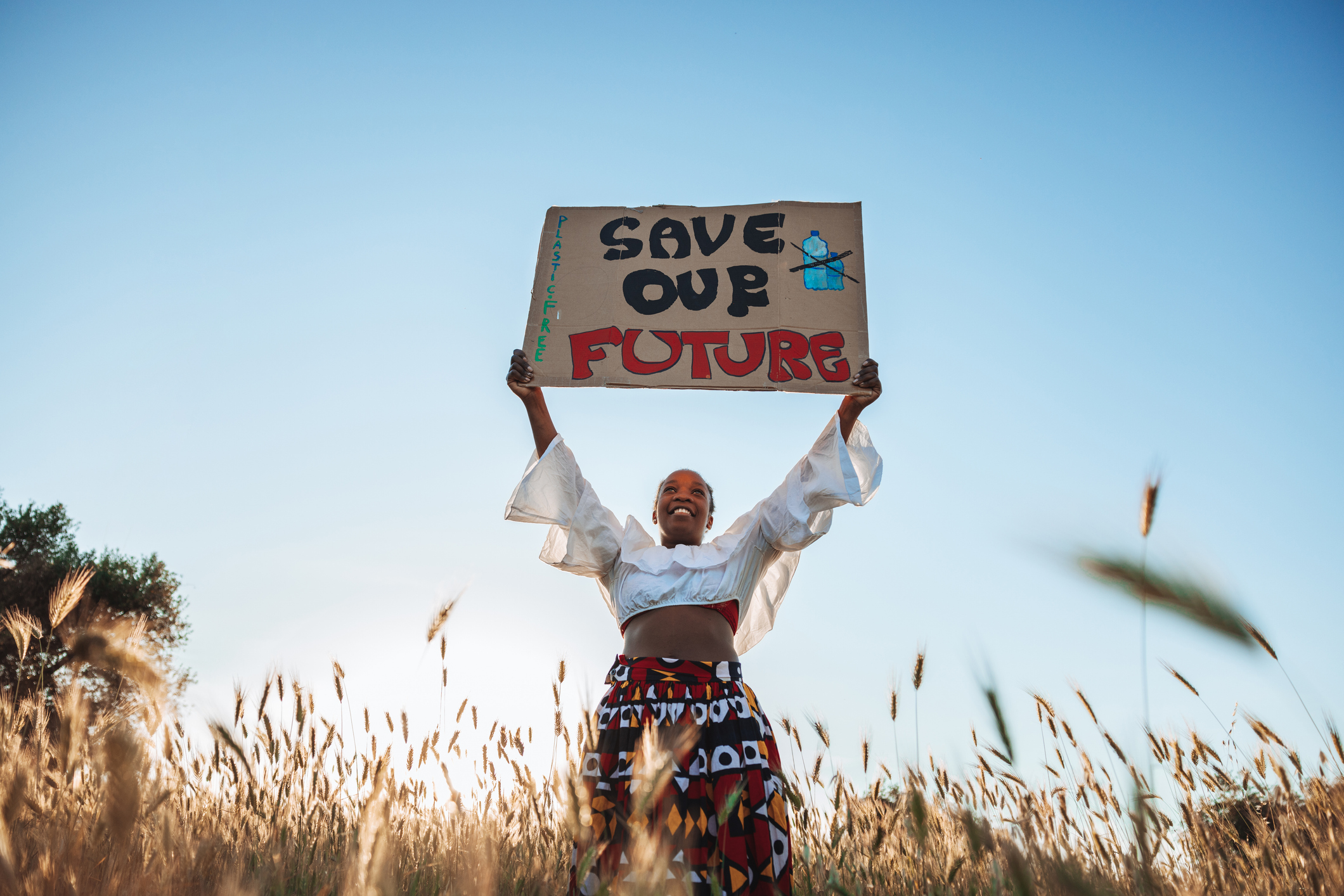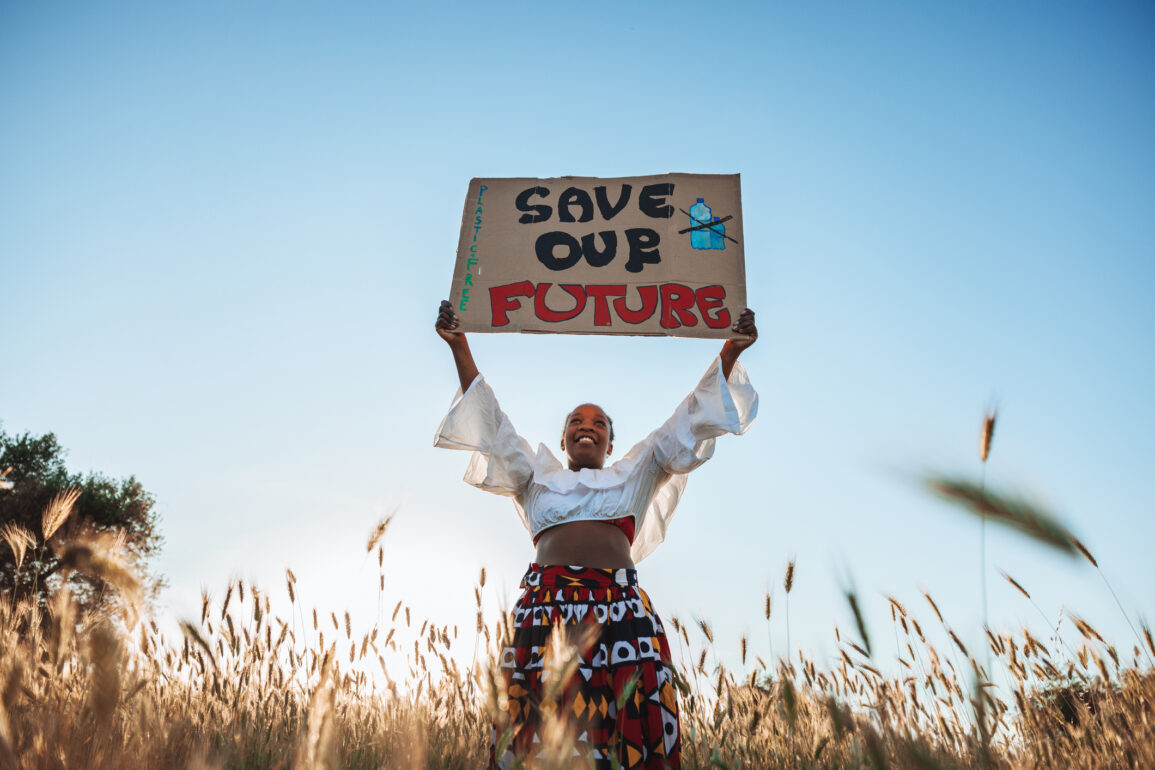
Expanding the framework for reparations to include present and future compensation for the disproportionate effects of the climate crisis on Black people is an idea gaining in popularity among climate justice advocates.
No estimates have been proposed for climate reparations in the U.S., but in 2023, researchers calculated a global projection of $192 trillion owed by wealthy nations to poor ones—with the U.S. as the major emitter of greenhouse gases responsible for $80 trillion.
Asked at a congressional hearing whether the U.S. would ever contribute to global climate reparations, Climate Envoy John Kerry said “No, not under any circumstances!”
In his testimony, he jokingly added the exclamation point.
Tragically, there’s nothing funny about climate reparations either in the U.S. or abroad. Here’s why.
What are global climate reparations?
University of Hawaii law professor Maxine Burkett coined the term climate reparations in a 2009 landmark law review. By it, she is referring to the moral obligation of industrialized countries to finance the reconstruction of towns and cities after climatic events in the Global South and to pay for future climate mitigation and adaptation.
She points out that rich countries, which pollute the global atmospheric commons with carbon emissions to grow their economies, “disproportionately and unfairly” harm the climate vulnerable in Global South countries. They should pay them to address grievances—both in the present and the future.
Burkett writes: “I use reparations to describe a process, instigated and propelled by the moral challenge of a massive wrong, to construct methods to
improve the lives of current victims into the future. Climate reparations is the effort to assess the harm caused by the past emissions of the major polluters and to improve the lives of the climate-vulnerable through direct programs, policies and/or mechanisms for significant resource transfers, to assure the ability of the climate-vulnerable to contemplate a better livelihood in light of future climate challenges.”
Since many of the poor countries Burkett has in mind are (or were) colonies of the rich perpetrators of these climate injustices, the idea of climate colonialism helps bring into focus the imperialist roots of the problem.
From this point, it’s easy to see how slavery also is intertwined with climate injustice, and, more broadly, environmental racism in the United States. Black people living in colonial America were treated first as indentured servants by their masters before slavery became customary. So, calls for climate reparations to be made to Black individuals and to Black communities in the U.S. are justified, based on the same reasoning Burkett advanced for global BIPOC.
The need for climate reparations in the U.S.
Demands by climate justice groups for climate reparations in the U.S. intensified when the Sixth Assessment Report (AR6) of the Intergovernmental Panel on Climate Change (IPCC) acknowledged for the first time in 2022 that colonialism was a driving force of human-caused climate change.
AR6 states: “Vulnerability of ecosystems and people to climate change differs substantially among and within regions (very high confidence), driven by patterns of intersecting socioeconomic development, unsustainable ocean and land use, inequity, marginalization, historical and ongoing patterns of inequity such as colonialism, and governance (high confidence).”
In previous articles, such as on climate gentrification in Charleston, South Carolina, and on environmental racism in Los Angeles and Louisiana, the current and future climate harms disproportionately felt by Black people are glaringly evident. Climate reparations in the U.S. are desperately needed to compensate for these and similar climate harms endured by Black people in recent decades and are predicted to intensify in the future.
Climate impacts on Black people in the U.S.
The U.S. Environmental Protection Agency (EPA) detailed six climate impacts on Black people and other marginalized groups in a 2021 report. These are:
- Air pollution and health. Higher asthma rates
- Extreme temperature and health. Premature death
- Extreme temperature and labor. Lost work hours
- Coastal flooding and traffic. Traffic delays
- Coastal flooding and property. Inundation from rising sea levels
- Inland flooding and property. Property damage and loss
The report included these statistics on how bad the climate crisis affects Black people:
- Black people are 40% more likely than whites to reside in neighborhoods with the highest projected increases in premature death due to extreme temperatures.
- Black people are 34% more likely than whites to live in areas with the greatest estimated rates of childhood asthma due to particulate air pollution (from fossil fuel power plants).
Here are other statistics compiled by the NAACP:
- More than one million Black people live within a half-mile of methane (fracked) gas facilities.
- Over 6.7 million Black people reside in the 91 U.S. counties with oil refineries.
- One million or more Black people face a cancer risk above EPA’s “level of concern” due to unclean air. They live in what experts refer to as “sacrifice zones.”
- Approximately 13.4% of Black children have asthma, compared to only 7.3% of white children.
- According to the recent National Climate Assessment, marginalized communities will face more flooding than any other group: “For socially and economically marginalized and low-income groups, climate change and current and future sea level rise could exacerbate many long-standing inequities that precede any climate-related impacts.”
The EPA report acknowledged that the most serious climatic events disproportionately affect marginalized communities who have the fewest resources to prepare for and recover from such incidences.
When climate catastrophes occur, Black communities receive less help than white communities to rebuild. As a result, Black communities see a decrease in wealth (lowering of property values) while whites benefit from increases.
Proposals for climate reparations by U.S. government
To address and resolve the climate harms disproportionately affecting Black people both now and in the future, climate reparations are appropriate. Unfortunately, the U.S. government has done little more than offer lip service to this national crisis.
Although both Clinton and Biden Administrations issued executive orders “to focus federal attention on the environmental and human health effects of federal actions on minority and low-income populations with the goal of achieving environmental protection for all communities,” no significant improvements resulted.
Biden’s Justice40 (J40) Initiative designates substantial funds to address climate justice problems, but progress is slow, as discussed in a previous article. Incidentally, race is not given as a criterion for eligibility in over 500 federal programs across 16 agencies.
Although they are not meant as climate reparations, there are two programs in U.S. states that serve to remedy climate-related problems faced by marginalized communities.
Racial Equity Impact Statements (REIS)
Chicago’s Department of Housing views its work to create affordable and safe housing through a racial equity lens. Since 2021, they issue Low-Income Housing Tax Credits (LIHTC) to developers as incentives to the private sector to
create affordable rental housing. Their Qualified Allocation Plan (QAP) is a streamlined set of instructions to guide LIHTC developers through the process.
Whole-Home Repairs Program (WHRP)
Pennsylvania’s Department of Community & Economic Development administers WHRP. This program grants funding for county agencies to enhance the habitability and safety of buildings for low-income homeowners and for landlords renting affordable units. Funding for improvements for energy or water efficiency is also available. Additionally, WHRP allocates funding to counties for construction-related workforce development.
Federal officials could develop programs like these specifically for Black communities, adding urban green spaces, raising and enforcing clean air and water standards, and upgrading local infrastructure. Such programs would represent the first meaningful steps toward instituting climate reparations in the U.S.



